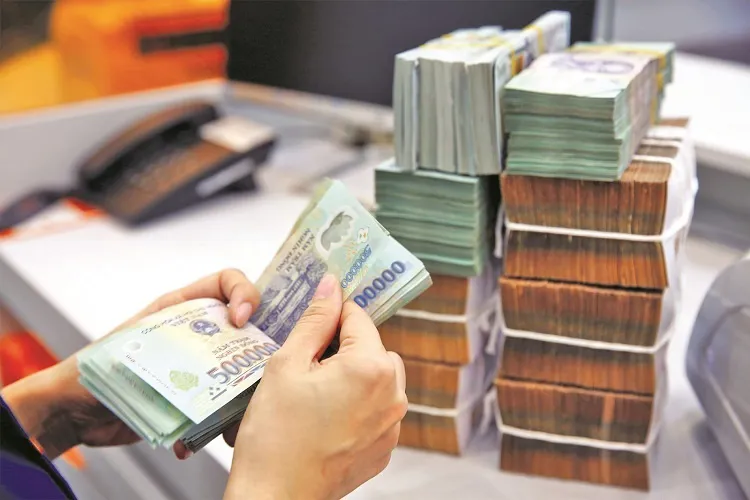Vietnam eyes sustainable financial system by 2030
The public debt threshold should not exceed 60% of the GDP for the 2021-2025 period, Government debt less than 50% of the GDP, and foreign debts below 50%.
Vietnam aims to promote a sustainable financial system that helps enhance economic resilience, stabilize macro-economic conditions, and national financial security.
| By 2025, the proportion of domestic revenue in state budget collection should be 85-86%. Photo: The Hanoi Times |
The move was part of Vietnam’s financial strategy until 2030 recently signed off by Deputy Prime Minister Le Minh Khai.
Among its key objectives, the plan sets out sufficient financial resources to ensure the realization of socio-economic, defense and security targets.
For the 2021-2025 period, the Vietnamese Government expects the state budget revenues from taxes and fees, customs duties, oil, and foreign donations would make up more than 16% of the GDP, and 16-17% for the 2026-2030 period. Of the total, the taxes and fees would represent 13-14% for 2021-2025, and 14-15% for 2026-2030.
By 2025, the proportion of domestic revenue in state budget collection should be 85-86%, and 86-87% by 2030.
The plan stressed the necessity for Government agencies to improve efficiency in state budget expenditure for greater sustainability, focusing on capital expenditure and debt payment.
“Greater resources should be allocated for national reserves, along with human development and social policies,” it said.
Regular spending would account for 62-63% of total expenditure for the 2021-2025 period, and capital expenditure for 28%.
“There should be a further decline in regular spending and higher allocation rate for capital expenditure during the 2026-2030 period,” the plan stated.
The Government also places its priority on public debt control for national financial security. More effective budget management, therefore, should help the country achieve a budget deficit at 3.7% of the GDP during the five years, and down to 3% of the GDP by 2030.
The public debt threshold should not exceed 60% of the GDP for the 2021-2025 period, Government debt less than 50% of the GDP, and foreign debts below 50%. By 2030, the corresponding rates should be less than 60%, 50%, and 45%, respectively.
In addition to state budget management, the Government expects the effective and healthy development of the financial markets, which maintains a balance between the monetary and capital markets, stock, bond, and derivative markets.
By 2025, the size of the stock market should be 100% of the GDP; total outstanding loans of the bond market are at least 47% of the GDP, and that of the corporate bond market at 20%. In the subsequent five years, the rates should be raised to 120%, 58%, and 25%, respectively.
Meanwhile, the insurance market should be able to meet diversified demands from organizations and individuals in the economy. Revenue from the sector is set to average 15% per annum in the 2021-2025 period, and reach 3-3.3% of the GDP by 2025; 10% in the 2026-2030 period.
It is estimated that 100% of large-scale enterprises have their financial statement audited, regardless of the types of ownership.
The Government targets to complete the restructuring process of state-owned enterprises (SOEs) by 2025 and to have major economic corporations in key economic fields capable of competing in the regional and international stages in 2030.
Strategic breakthroughs for finance sector
To achieve the goals set above, the plan expected the soon finalization of the financial legal framework that facilitates the restructuring of the state budget and the development of the financial market towards greater modernization, transparency, and sustainability.
Vietnam is set to have a digital treasury by 2030 with a high level of IT application in the management of national reserves and effective supervision of the securities market.
The Government would further revise financial policies to support the development of high-quality human resources, science, technology, and innovation. This would lay the foundation for the development of digital finance based on IT and digitalization.












